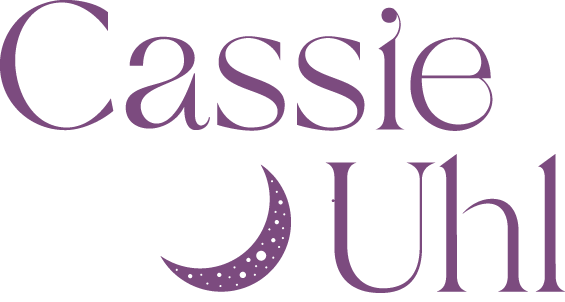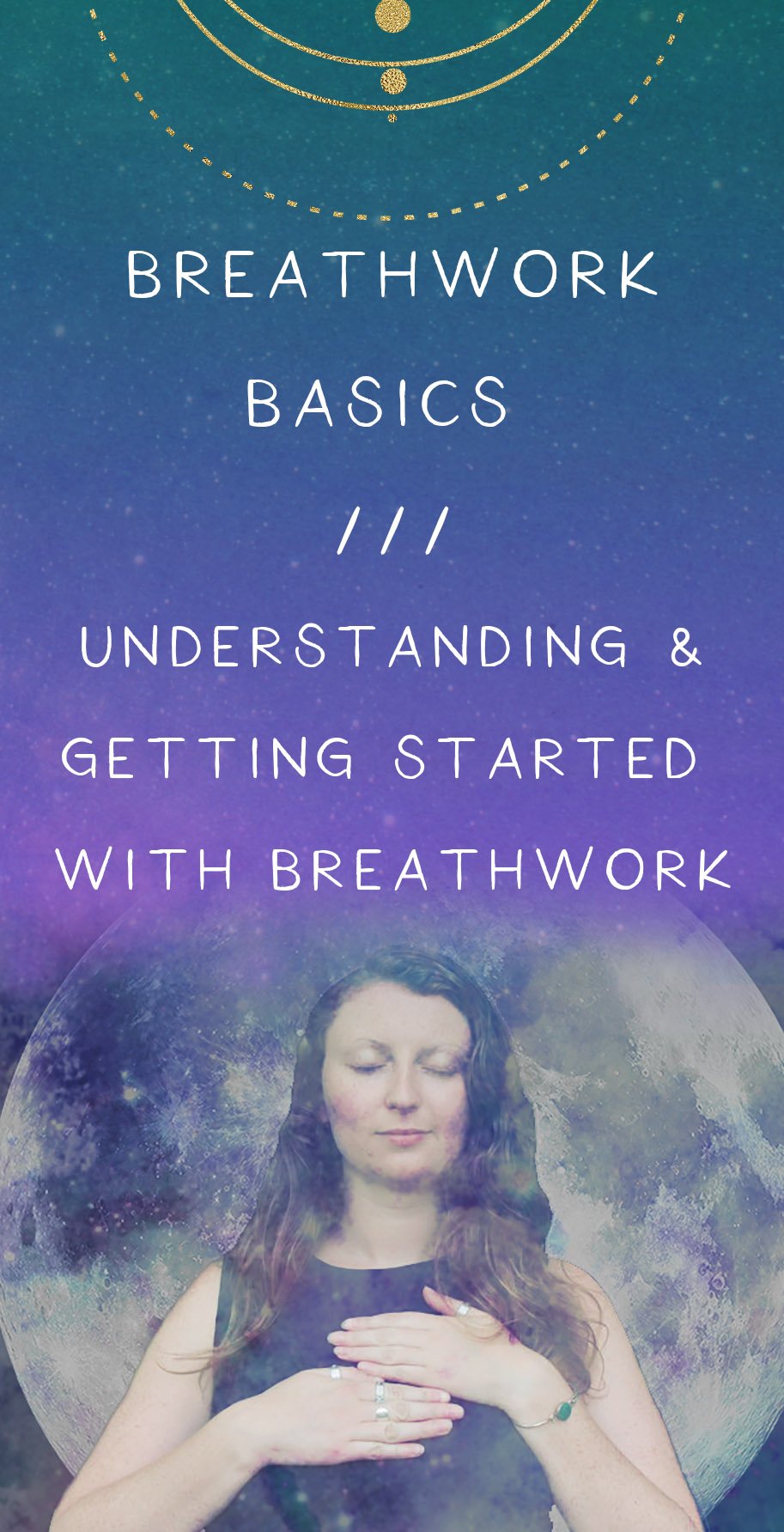Breathwork Basics // Understanding & Getting Started with Breathwork
Breathwork has been practiced for centuries across many different cultures - Chinese, Jewish, the ancient Greeks, India, different tribes in Africa, and more - for healing, reaching ecstatic states, reaching states of extraordinary consciousness, self-discovery, and spiritual healing.
My definition of breathwork is consciously working with the breath for healing.
We breathe every day, of course, but often we’re breathing unconsciously. When I first found breathwork through yogic pranayama, it shocked me how powerful it was to breathe consciously. Different breathwork patterns can bring up various things with you, offer varying levels of intensity, and creating a wide variety of effects.
In the book Holotropic Breathwork, author Stanislav From shares that the word breath can be translated to mean spirit or soul. In Latin, the word spiritus is used to describe the physical intake of air but is also the word for spirit.
Breath nourishes us on a physical level (we literally can’t live without it!), but for centuries different cultures have thought of breath a bit differently: as spirit, as life force.
In this blog, I’ll be sharing a bit about the benefits of breathwork, a few different styles of breathwork, and how to get started with a breathwork practice of your own.
BENEFITS OF BREATHWORK
One of the things I love about breathwork is how different every experience can be. With that in mind, here is a non-exhaustive list of some of the benefits I have personally experienced through breathwork and/or witnessed clients experience:
Unblock creativity
Open to your intuition
Open your heart
Heal trauma
Feel your feelings
Ground and drop into your body
Calm your mind
Relax
Release stress
Release shame
Clear stuck energy from your body
Experience joy, love, and pleasure
Connect with yourself
Connect with the Universe
Find a place of steadiness and peace within
Heal unhealthy patterns
Release fear
I’ll share about three different patterns of breath to work within the sections below, but please know that this is just a sampling of the many different breath patterns out there.
DIAPHRAGMATIC BREATHING
We start here with a simple but powerful breath, also known as abdominal breath or belly breath. I find this breath to be relaxing, grounding, and centering. It helps us get into the body and release stress and tension, making it a great meditative practice.
The intention of this breath is to breathe deeply in through your nose into your belly and exhale out of the nose or, ideally, the mouth.
Your belly expands with your inhale (because of the downward movement of your diaphragm) and contracts to your spine with your exhale (because of the upward movement of the diaphragm). Breathing into your belly really means that the lowest lobes of the lungs, somewhere we don’t usually breathe into, are being filled with breath.
This breath can be done lying down or sitting up, and I highly recommend placing one hang or both hands on your belly to really get a feel for the movement of the breath.
Try this breath out with five or ten rounds of inhales and exhales to start, then spend a moment noticing how your body feels. What sensations are present?
BREATHWORK
The style of breathwork I am trained in and facilitate is simply called breathwork and was taught to me by my teacher David Elliott. This breath comes from the pranayama tradition in India.
This three-part active breath is intended to move stuck emotional energy, and it’s the most powerful breath style I know to heal trauma, open your heart, and move energy. With that being said, it is a much more intense breath than diaphragmatic breathing and has a few contraindications.
For any breathwork, you’ll want to talk to your doctor if you have a condition or health issue you’re concerned about. For this breath specifically, talk to your doctor before practicing if you’re in your first trimester of pregnancy, have a history of seizures, experience retinal detachment, or have an aneurysm.
This breath can create a lot of sensation in the body, including vibration and tingling and/or numbness in different parts of the body. It can bring up memories, intense emotions like anger, and grief. Sometimes, folks will connect with a guide, or ancestor, or have another type of dreamlike experience.
To practice this breath, you’ll want to either lay down or prop yourself up - just make sure you’re fully supported in whatever way feels best to your body. When you’re ready, breathe in through your mouth into your belly, in through your mouth into your heart/high chest, and out through your mouth.
To try out this breathwork, start with just five minutes of breath followed by a few minutes of rest and integration. Or, check out the Zenned Out IGTV to breathe along with me in a short guided breathwork practice.
BOX BREATH
Box breath, or square breath, can help regulate the nervous system, lower blood pressure, improve sleep, and help you feel more relaxed - making it a great breath to practice when you’re feeling stressed or to relax before bed.
According to the Mayo Clinic, the slow holding of the breath “allows carbon dioxide to build up in the blood, which enhances the cardio-inhibitory response of the vagus nerve when you exhale and stimulates your parasympathetic system. This produces a calm and relaxed feeling in the mind and body.”
Box breath can be done sitting up (recommended) or lying down if needed. To practice, inhale slowly and deeply through your nose for a count of 4. Hold your breath for a count of 4 (this is internal breath retention). Exhale slowly through your mouth for a count of 4. Hold the breath out for 4 (this is external breath retention). So you’ll inhale for four counts, hold the breath in for four counts, exhale for four counts, and hold the breath out for four counts.
You can change the counts to match your lung capacity, perhaps working with a count of 3 for a lower capacity for 8 for a larger one. You may find that your capacity grows as you continue to practice, as well.
Try it out with four cycles of breath, then notice how you feel.
CREATE A REGULAR BREATHWORK PRACTICE
The most incredible thing about breathwork is that it truly allows you to become your own healer. It’s a body-based, self-healing practice that is quite accessible for most folks.
You now have three different styles of breathwork to work with - I recommend trying them all out, and seeing what feels best for you. Then, try committing to practicing that style of breathwork every day for at least a week for just a few minutes, journaling about how the practice made you feel after each practice.
If you’d like to learn more about breathwork, I recommend checking out my wonderful friend Jennifer Patterson’s book The Power of Breathwork.




